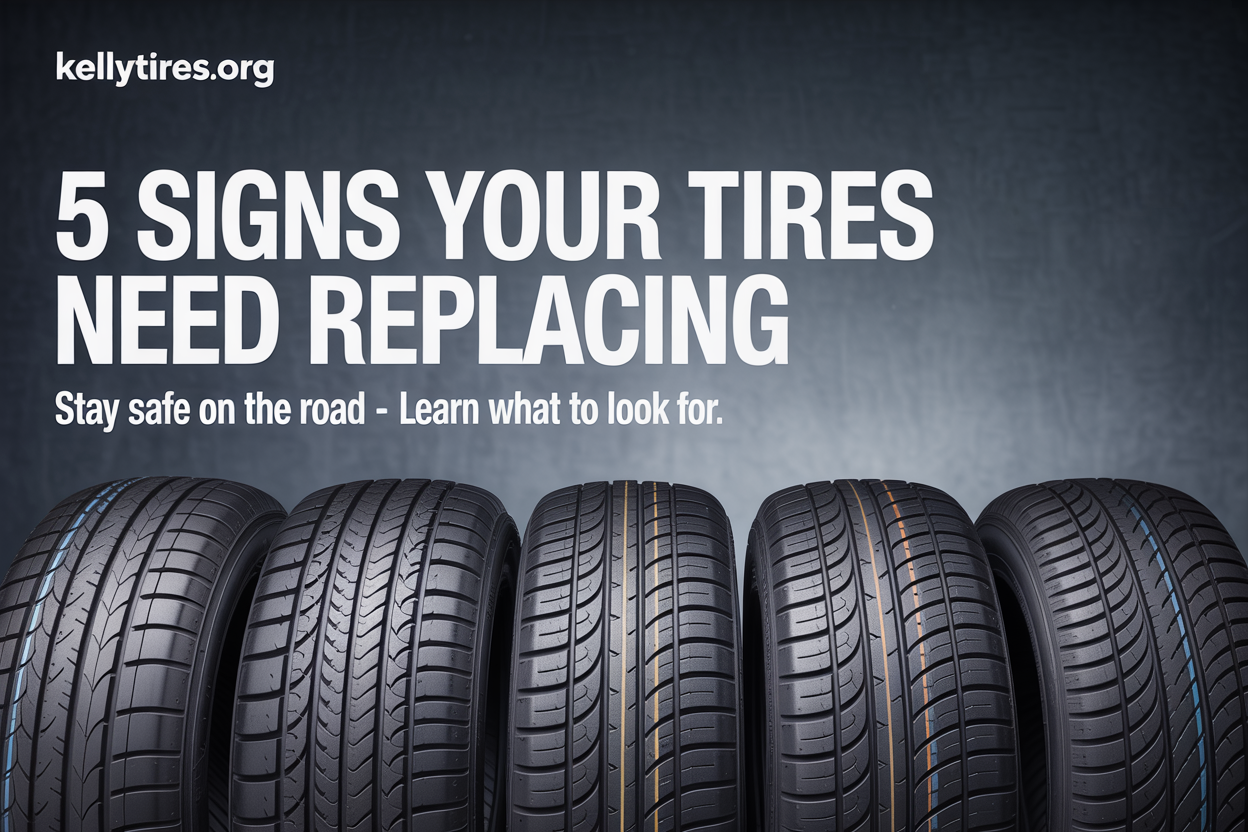Your tires are the only part of your vehicle that actually touches the road—just four patches of rubber, each no bigger than your hand, keeping you connected to the pavement. Yet most drivers pay more attention to their windshield wipers than these critical safety components.
Here’s a sobering fact: driving on worn tires increases your stopping distance by up to 87% on wet roads. That’s the difference between stopping safely and rear-ending the car ahead. The National Highway Traffic Safety Administration reports that tire-related crashes cause over 700 fatalities annually, with many of these accidents entirely preventable through proper tire maintenance.
The good news? Your tires constantly communicate their condition—you just need to know what to look for. Unlike engine problems that require diagnostic computers or transmission issues that demand expert knowledge, tire wear shows clear, visible signs that anyone can spot in under five minutes.
In this guide, we’ll reveal the five unmistakable signs that your tires need replacing. No special tools required, no mechanical expertise needed—just your eyes and perhaps a penny from your pocket. Whether you’re preparing for a long road trip or simply want to keep your daily commute safe, these warning signs could save you from a dangerous situation or costly accident.
By the end of this article, you’ll know exactly when to replace your tires, potentially preventing that heart-stopping moment when worn tires fail to grip in an emergency.
Sign 1: The Penny Test Fails
The penny test remains the quickest, most reliable way to check tire safety at home. This 30-second check could literally save your life, yet surveys show that 85% of drivers have never performed it.
How to Perform the Test
Take a penny and place it headfirst into several tread grooves across your tire. If you can see all of Lincoln’s head, your tread depth is less than 2/32 of an inch—the legal minimum in most states. But here’s what many don’t realize: legal doesn’t mean safe.
At 2/32″ tread depth, your tires are essentially bald. In rain, these tires can’t channel water away fast enough, causing hydroplaning at speeds as low as 35 mph. That’s residential street speeds, not highway driving.
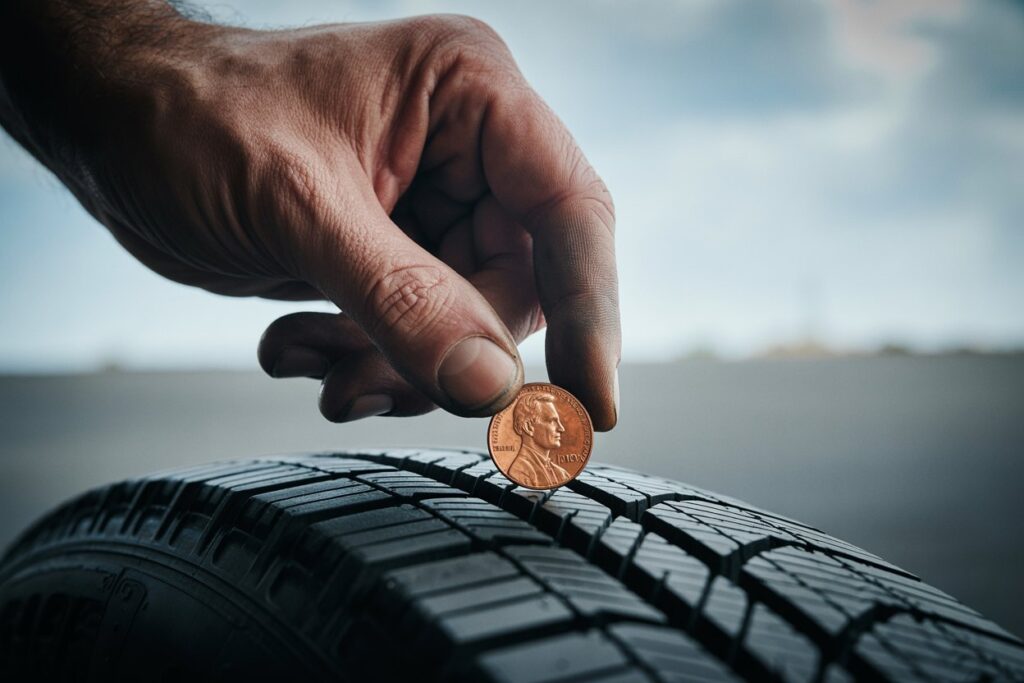
The Quarter Test: A Better Standard
Safety experts now recommend the quarter test instead. Place Washington headfirst into the tread. If you can see the top of his head, you have 4/32″ or less—time to start shopping for tires. This provides a safety buffer, especially crucial for wet weather driving.
What Tread Depth Really Means
New tires typically start with 10/32″ to 11/32″ of tread. Here’s how performance degrades:
- 8/32″: Still excellent in all conditions
- 6/32″: Good performance, some reduction in snow traction
- 4/32″: Significantly reduced wet weather performance
- 2/32″: Dangerous in any precipitation, replace immediately
Don’t check just one spot. Measure the inner, center, and outer grooves. Also check multiple locations around the tire’s circumference. If any single measurement fails, the entire tire needs replacement. Tires can’t be selectively repaired for worn tread—once it’s gone, it’s gone.
Sign 2: Uneven Wear Patterns
While the penny test checks overall tread depth, uneven wear patterns tell a deeper story about your vehicle’s health. These patterns are like fingerprints, revealing hidden problems that could cost thousands if ignored.
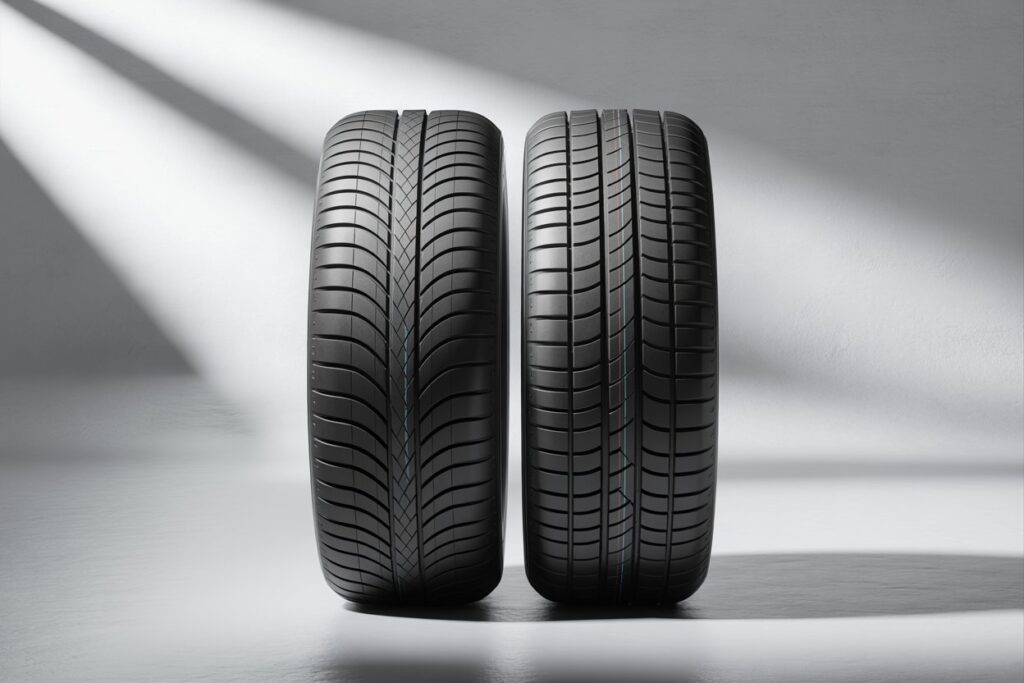
Center Wear: The Overinflation Warning
Run your hand across the tire width. If the center feels significantly smoother than the edges, you’ve been driving on overinflated tires. This creates a smaller contact patch, reducing grip and wearing the center prematurely. Beyond replacing the tire, you’ll need to adjust your inflation habits—check pressure monthly, not just when tires “look low.”
Edge Wear: The Underinflation Tax
When both outer edges wear faster than the center, underinflation is the culprit. This is the most expensive wear pattern because underinflated tires increase fuel consumption by up to 3% while generating excessive heat that damages the tire structure. You’re literally burning money and safety simultaneously.
One-Sided Wear: Alignment Alert
If one edge shows significantly more wear, your alignment is off. This often happens after hitting potholes or curbs. Here’s the costly part: misalignment doesn’t just ruin tires—it’s actively damaging suspension components. A $100 alignment service could prevent $1,000 in suspension repairs.
Cupping or Scalloping: Suspension SOS
Feel for dips and smooth spots alternating around the tire. This wavy pattern indicates worn shocks, struts, or suspension bushings. The tire is literally bouncing down the road instead of rolling smoothly. Replacing these tires without fixing the suspension means your new tires will develop the same problem within months.
The Bottom Line
Uneven wear always has a cause. Simply replacing the tire without addressing that cause wastes money and compromises safety. Think of these patterns as your car’s way of asking for help—ignore them at your own risk and expense.
Sign 3: Visible Damage
Sometimes tire problems scream for attention. These visual warning signs require no special knowledge—if you can see these issues, your tire is already compromised.
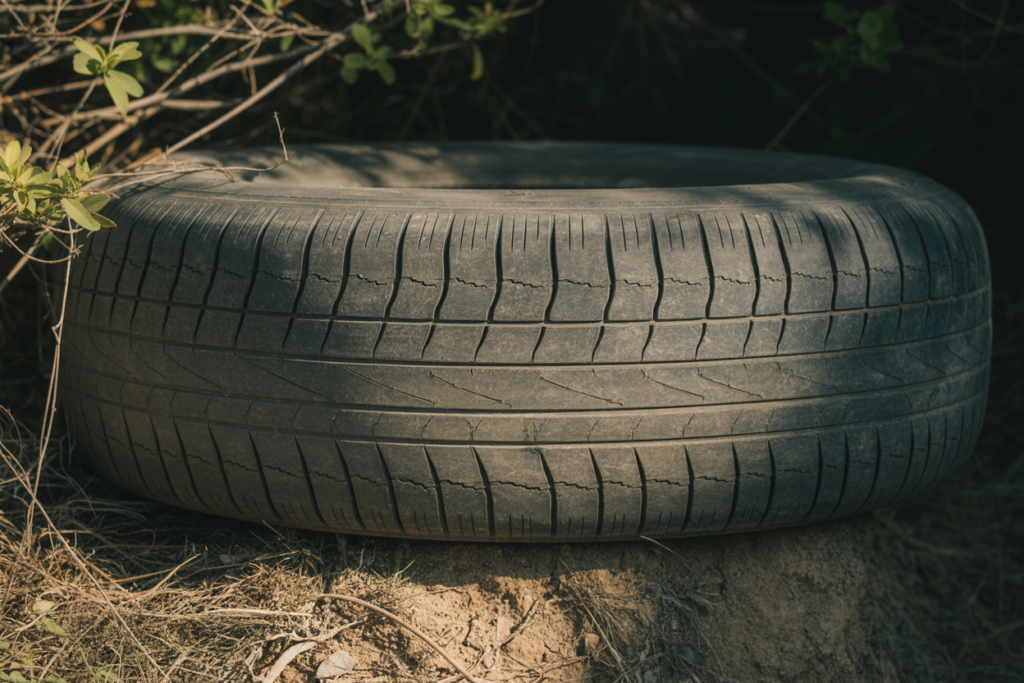
Sidewall Cracks and Weather Checking
Look closely at the tire’s sidewall. Those small cracks that look like dried mud? That’s weather checking, and it means the rubber is breaking down. Unlike tread wear, sidewall damage can’t be repaired. These cracks grow under pressure and heat, potentially leading to sudden blowouts at highway speeds.
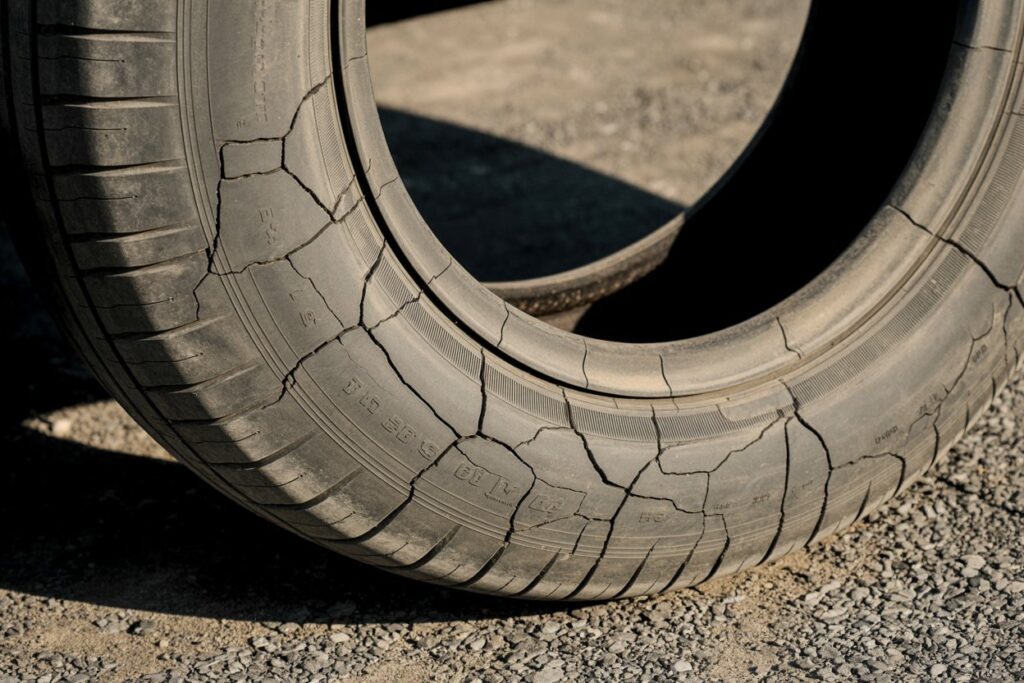
Age, UV exposure, and extreme temperatures cause this deterioration. Parking outdoors accelerates the process, which is why garage-kept vehicles often have tires that last years longer.
Bulges and Blisters
A bulge on your tire is like an aneurysm—a weak spot ready to burst. These form when the tire’s internal structure fails, usually from impact damage. Hit a pothole hard last month? That bulge appearing now is the delayed result.
Never drive on a tire with a bulge. The risk isn’t worth it. That bubble can explode without warning, causing instant loss of control. There’s no such thing as a “small” bulge that’s safe to monitor.
Cuts, Punctures, and Embedded Objects
A nail in your tread might be repairable. A nail in your sidewall means buying a new tire. The sidewall flexes constantly while driving, preventing any patch from holding permanently.
Check for embedded objects weekly. That screw that “seems fine” is allowing air to escape slowly while potentially working deeper into the tire. Remove it roadside, and you might find yourself stranded with a sudden flat.
The Three-Strike Rule
Even if individual damage seems minor, multiple issues compound the risk. A tire with two repaired punctures and minor sidewall cracking has three strikes—time for replacement. Professional mechanics often refuse to repair tires with multiple issues for liability reasons. Take the hint.
Sign 4: Age Matters
Here’s a shocking fact most drivers don’t know: tires expire like milk, not wine. Even pristine-looking tires with plenty of tread can be dangerous simply due to age.
How to Read Tire Date Codes
Every tire has a birth certificate molded into its sidewall. Look for a four-digit code inside an oval stamp, usually on the inner sidewall. The first two digits indicate the week, the last two show the year. “2419” means the 24th week of 2019.
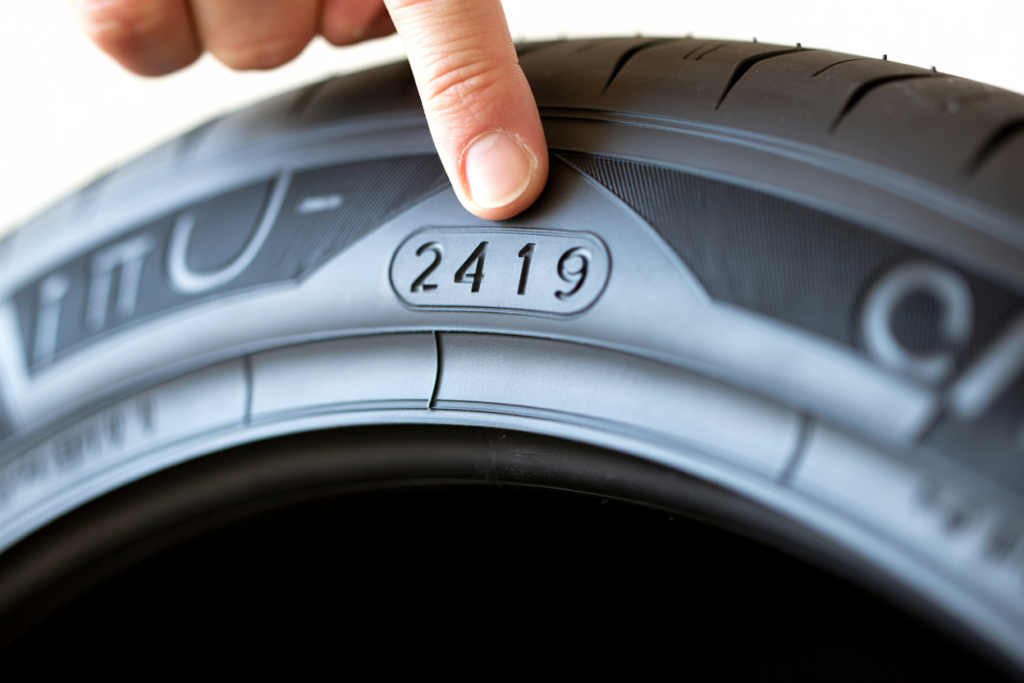
Can’t find it? Check the other side of the tire. If the code reads three digits or seems worn away, the tire is likely ancient—pre-2000 tires used a different system.
The Six-Year Rule
Most tire manufacturers recommend replacement after six years, regardless of tread depth. By ten years, even unused spares should be discarded. Why? Rubber compounds deteriorate over time through oxidation, becoming hard and brittle.
Think of an old rubber band—it snaps instead of stretching. Your tires undergo the same transformation, losing their ability to grip and flex. This aging happens whether you drive 20,000 miles a year or keep the car parked.
Special Considerations for Spare Tires
That spare in your trunk might be a ticking time bomb. Spares age faster than regular tires because they’re often stored in hot trunks, exposed to extreme temperature cycles. Check your spare’s date code—discovering it’s 15 years old during a roadside emergency is too late.
Full-size spares can be rotated into regular use if they’re less than six years old. But those temporary “donut” spares? They’re for emergency use only and still expire. Many drivers are unknowingly carrying useless spares that would fail if actually needed.
Climate Accelerates Aging
Hot climates age tires faster. Phoenix tires might need replacement at four years, while Seattle tires could safely last seven. Frequent temperature extremes—hot days, freezing nights—create the worst conditions for tire longevity.
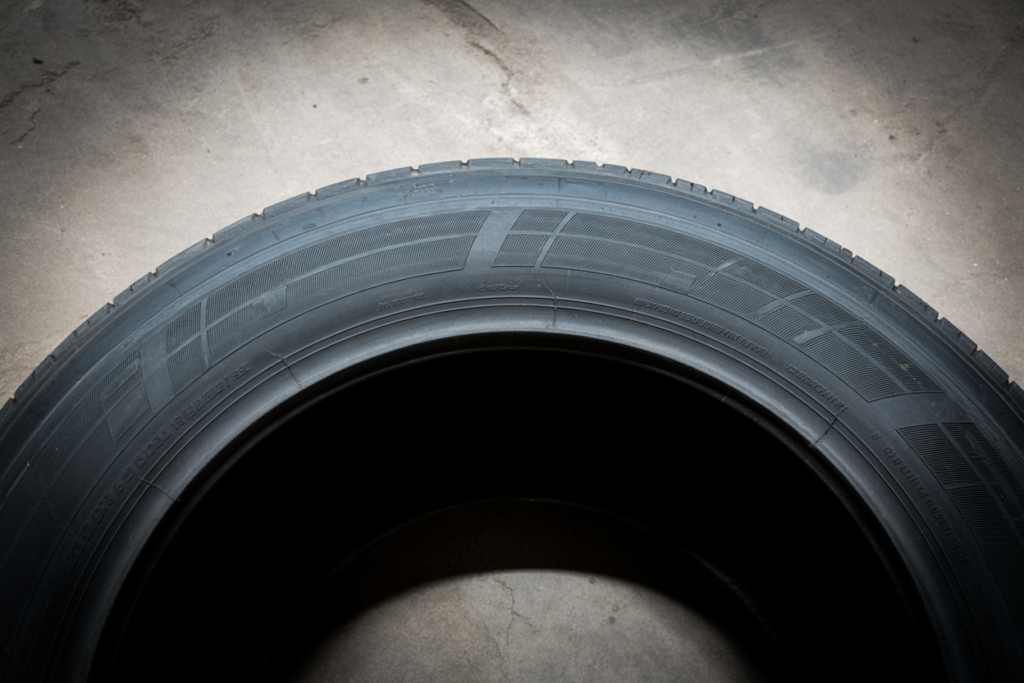
Sign 5: Performance Changes
Your tires often announce their retirement through changes you can feel, hear, and experience while driving. These performance symptoms usually appear gradually, making them easy to dismiss—until they suddenly become dangerous.
Vibration at Highway Speeds
New vibrations that appear around 50-70 mph often signal tire problems. While wheel balance issues cause steady vibrations, worn or damaged tires create vibrations that change with speed or road conditions.
Internal belt separation causes the most concerning vibrations. The steel belts inside your tire are detaching from the rubber, creating an invisible bump that grows with each rotation. This isn’t just uncomfortable—it’s a blowout waiting to happen.
Increased Road Noise
Tires get louder as they wear, but sudden noise increases signal specific problems. A humming that changes pitch with speed indicates uneven wear. Thumping sounds mean flat spots or severe internal damage.
If your quiet morning commute now sounds like driving on a rumble strip, your tires are shouting for attention. Don’t turn up the radio—address the source.
Longer Stopping Distances
This degradation happens so gradually that most drivers adapt unconsciously. You brake a little earlier, leave more space, avoid sudden stops. But here’s the reality: worn tires can add 50+ feet to your stopping distance from 60 mph. That’s three car lengths—often the difference between a close call and a collision.
Test this safely in an empty parking lot. If your ABS activates more easily than before, or if the car feels less stable during hard braking, your tires have lost their grip.
Loss of Wet Weather Confidence
The first rain after a dry spell reveals tire problems immediately. Hydroplaning at moderate speeds, fishtailing around corners, or wheelspin during normal acceleration all indicate compromised tires.
Modern stability control systems mask some tire deficiencies, but they can’t overcome physics. When electronic assists activate constantly during light rain, your tires—not your driving—need attention.

